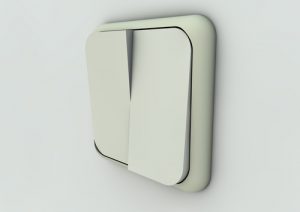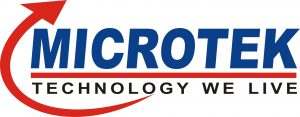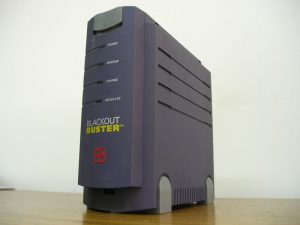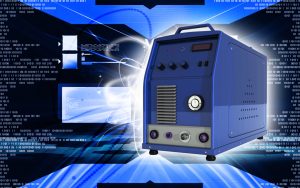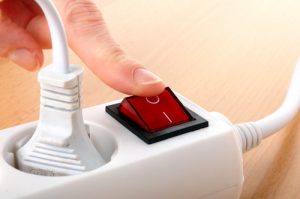Luminous Inverter/UPS Review 2024
Luminous Power Technologies (or simply, Luminous) is one of the leading power backup appliance manufacturers in India. It has a vast portfolio comprising basic household inverters, modern UPS (uninterrupted power supply), high capacity 3-phase inverters, solar powered UPS, and inverter batteries. When it comes to batteries Luminous offers wide range of inverter batteries, ranging from 60 Ah to 220 Ah. These batteries can give the running time of 30 minutes depending upon the type and capacity of the battery. Recently it has started electrical offerings like LED lights, fans, switches, wires etc. With 7 manufacturing units, 200+ authorized service centers, 1200+ field service professionals, 3000+ distributors, 60,000+ dealers and millions of customers it one of the most reliable UPS brands in India. It has been in the inverter business for more than two decades. It was acquired by a reputed Fortune 500 company, Schneider Electric in 2011.
Key Luminous Inverter Technologies
Inverter with a Smart Display
Zelio series of Luminous inverter comes with a smart display to neatly show various parameters and statuses. For example, it displays the backup time available (in hours and minutes), battery charging status, water level (to know when to add distilled water), mode of operation etc. With a smart display, it is easy to manage and preplan power backup requirements for power cuts. The inverter gives a rough estimate of remaining battery runtime while in the battery mode. But it is important to note that this estimation is depends on the load on inverter and battery charge status. So, it is not 100% accurate.
Multi-stage Battery Charging with ABCC Technology
Modern Luminous UPS supports multi-stage battery charging for efficient charging of batteries. They support 3-stage battery charge followed by ABCC technology for optimized battery charging and durability. The three stages of battery charging are explained in detail below:
Bulk Charge
The main purpose of a battery charger is to recharge a battery. Bulk charge is the first stage of charging wherein the highest rated voltage and amperage is given to the battery. This stage will recharge batteries that are severely drained. This is the longest stage of the battery charging accounting as much as 80% of the total battery charging process. The good thing about Luminous UPS battery charging is there isn’t much risk of overcharging in this stage because the battery is not charged completely with the high voltage high current—which is usually the culprit of overheated batteries.
Absorption
Modern Luminous UPS are smart enough to detect voltage and resistance from the battery prior to charging. After reading the battery status, the UPS processor determines which stage to charge the battery with. Once the battery has reaches 80% charge level, the charging stage will be changed to the absorption stage. Absorption stage is usually the penultimate stage of the battery charging process in Luminous inverters. In the absorption stage, Luminous UPS supplies the steady voltage with the decreasing current to charge the battery. The lower current going into the battery safely charges the battery without overheating it. It is important to note that this stage takes much more time to charge compared to the bulk stage.
Float Charge
The final stage in the battery charging process in the modern Luminous UPS is the float stage. This stage is triggered when the battery level crosses 95%. In this stage, UPS processor supplies intermittent electricity called trickle charge. Trickle charge is one in which the battery is supplied with low voltage and low current at a rate nearly equaling to the idle discharge rate of the battery. This way neither the battery overcharges nor the internal temperature shoots up.
Need for ABCC Charging
While float charging will help in keeping the batteries at full charge, it can have a negative impact on the service life of the battery. Because it introduces risk and may increase the maintenance cost of the battery tremendously.
The incessant float charging keeps generating heat within the batteries. The heat levels are further aggravated by closely packed batteries in the UPS installation setup. With the likelihood of high temperatures during the peak summers, maintaining the battery in a healthy stage becomes very challenging, as high ambient temperature increases the internal temperature of the battery. Higher internal battery temperatures speed up the chances of battery failure. UPS battery could reach temperatures close to 60°C during the peak summer added with the frequent power cuts. So as an aftermath, “10-year” life marketed by the battery makers with a true expected life of 6-8 years may only deliver 2-4 years actual life in such extreme conditions. Varying temperatures impacts the self-discharge rate of the battery and to compensate for varying rates, the battery needs some adaption mechanism. This is done through Adaptive Battery Charging Control (ABCC) technology which modern UPS comes with.
ABCC is a methodology that collects the battery data and uses it to administer battery-charging needs on an ever-changing basis. With ABCC technology in use, UPS processor uses dv/dt (a mathematical operator for determining the rate of rate of change of voltage with respect to time) charge termination to ensure that charging stops immediately when the battery is completely charged. This puts a full stop on continuous overcharge and overheating of batteries. Using ABCC, UPS processor adapts to the depth of discharge and compensates for the effect of the temperature.
Rhino Charge for Low Voltage Charging
In the rural areas and small towns when there is the recurring problem of low voltage supply from the grid, normal inverters start giving problems. Now, the common complaint from the users residing in a low voltage area is that despite the availability of the main supply, their inverter fails to charge the battery and the load in their house does not work on main, but from the battery. This results in frequent discharging of the battery. But thankfully Luminous inverters come with an advanced Rhino Charge technology which makes inverter charge the battery even at low voltages.
Inverters from Shakti series of Luminous are proficient in handling low voltages. Using various smart battery technologies, Shakti series inverters are able to operate smoothly even in the conditions when the voltage from the mains drops to 95V.
Comprehensive Protection through MCB and Anti-islanding
Inverters are the appliance which typically deals with high power. So, it is important that they are covered with multifarious protection methods. Luminous leaves no stone unturned to ensure the appliance protection and security is incontrovertible. Ordinary inverters generally use the conventional fuse to protect the inverter circuit from the passage of excessive current through it. For starters, a fuse is used in a circuit which consists of the conductor which melts easily (due to very high current). So, if the current passing through the conductor exceeds the rated value, it melts and upon melting it breaks the connection. An electrical fuse is generally the weakest part of a household electrical circuit which breaks upon the passage of current exceeding the predetermined value. But the modern Luminous inverters from the Cruze series comes with Miniature Circuit Breaker (MCB) instead of the fuse for better protection. Here are the noted advantages of using MCB over a fuse:
- MCB is much more sensitive to overcurrent than a fuse.
- From an electrical safety perspective, handling MCB is safer than a fuse.
- It is easy to identify the faulty zone as the switch operating knob comes at its off position during the tripping.
- Blown fuse requires rewiring. On the contrary, MCB allows quick restoration by simply switching on operation
Solar grid inverters can face a problem called islanding. Islanding is the condition in which an inverter continues to power the load even though electrical grid power is no longer present. Now, this islanding can be dangerous to utility workers, who may not be aware that the circuit is still “live” while attempting to work on the line. Additionally, it may even prevent automatic re-connection of devices. And without strict frequency control, the balance between load and generation in the islanded circuit is disturbed, leading to unwanted voltages and frequencies which can be detrimental to the sensitive electronic appliances.
Islanding typically occurs in solar inverters because there is a distribution feeder that has solar panels attached to it. In the case of a power cut, the solar panels will continue to deliver power as long as something called irradiance is sufficient. Irradiance is a measurement of solar power, defined as the rate at which solar energy falls onto a surface. So, in such scenario, the circuit detached by the outage becomes an “island”. But thankfully Luminous solar inverters are designed to detect islanding and immediately disconnect from the circuit. This is called anti-islanding technology. Thus, anti-islanding technology ensures complete safety of the line labors by preventing the wrongful passage of electricity to the grid if the grid has failed.
Besides MCB protection and anti-islanding, premium Luminous inverters come with additional protection features such as short-circuit protection, reverse polarity safety, and battery deep-discharge prevention. It gives out a pure sinusoidal output akin to the mains, free from unwanted noise signals.
Pros and Cons of Luminous Inverters
Luminous is a pioneer in making inverters visually appealing. The aesthetics that the latest Zelio series inverters come with, is the testimony of that. Similarly, customer support is also one of the key forte of Luminous inverters. They have a thousand of service professionals which can be contacted through hundreds of service points located all across India. Also, the customer can raise a service request through a dedicated mobile application or helpline number which works 24×7 round the clock. All these pros are testified with the various awards they have received. Like for example, they have won Superbrand award for 3 times in the past decade and have been most attractive brand in the inverter category according to TRA advisory. Even the government have acknowledged the Luminous efforts by awarding them Udyog Ratna award in 2014. It is also one of the few brands which have received various certifications from IEC and is approved by MNRE department of the government.
Talking about the not-so-good side of Luminous inverters, the absence of smart inverter control through the app would be one of them. Smart inverters by V-Guard allows the user to control and monitor charge of the battery, battery usage, backup time etc. This is something we missed with Luminous inverters. Also, battery charging in the Luminous misses out desulphation stage which removes the sulphur impurities prior to bulk charge stage for better battery charging like in case of premium Su-Kam and Microtek inverters. Though the inverter (Zelio series) has a provision to connect a battery water level sensor to monitor distilled water level inside the battery, but the sensor wire is not supplied with inverter. Customers need to buy it separately; something which we didn’t like about Luminous. When the best of Luminous can work at the most at 95V, Su-Kam inverter can go further below with Falcon+ series capable of working with voltage as low as 90V.
Conclusion
Starting with a meager 40,000 rupees capital in a 600 sqft space, to building a 2000-crore empire with 6000+ employees, Luminous has come a long way. Luminous holds a firm grip over the Indian market with its good quality power backup solutions and other related appliances. That is the reason why it has more than 1/3rd of the total market share in the inverter segment. From economical Eco Watt series for a small family to Grid-tie NXI series inverters for big corporates, Luminous has a wide portfolio of power backup appliances. The Zelio series comes with a display which is not only beautiful but also intuitive and useful. Adaptive multi-stage charging adapts the battery charging process with respect to the ambient temperature and other factors affecting the charging process. MCB, anti-islanding and other rugged technology design ensure optimal performance and longer backup time, especially considering the harsh Indian climate. The low harmonic distortion makes Luminous home inverters almost noiseless. The pure sine wave output from the inverter makes sure energy efficiency is uncompromised, leading to savings on the electricity bills. Rhino charge can be the boon for the users living in the region where low voltage from the mains is common. Luminous is definitely one of the recommended brands if you want a solid inverter with an appealing design.
Some Good Luminous Inverters
 Luminous Zelio+ 1100 Home Pure Sinewave Inverter UPS - Black
Luminous Zelio+ 1100 Home Pure Sinewave Inverter UPS - Black
 Luminous Zolt 1100 Sine Wave Inverter for Home, Office & Shops (Blue)
Luminous Zolt 1100 Sine Wave Inverter for Home, Office & Shops (Blue)
 Luminous 900VA Eco Watt Neo 1050 Square Wave Inverter for Home, Office and Shops(Blue)
Luminous 900VA Eco Watt Neo 1050 Square Wave Inverter for Home, Office and Shops(Blue)
 Luminous Power Sine 800 700VA Pure Sine Wave Inverter for Home, Office, and Shops (Blue)
Luminous Power Sine 800 700VA Pure Sine Wave Inverter for Home, Office, and Shops (Blue)
 Luminous UPS 600va
Luminous UPS 600va
 Luminous UPS 600va
Luminous UPS 600va
About the Author:
Hussain Kanchwala is an Electronics Engineer from University of Mumbai. As an Analyst at BijliBachao he keeps a tab on latest technologies in gadgets and appliances, tracks businesses of white goods companies and monitors the consumer behavior. With a background in engineering, penchant for detail, and flair for writing he regularly write reviews about brands and their products. More from this author.







